Scientist of the Day - Apollinaire Lebas
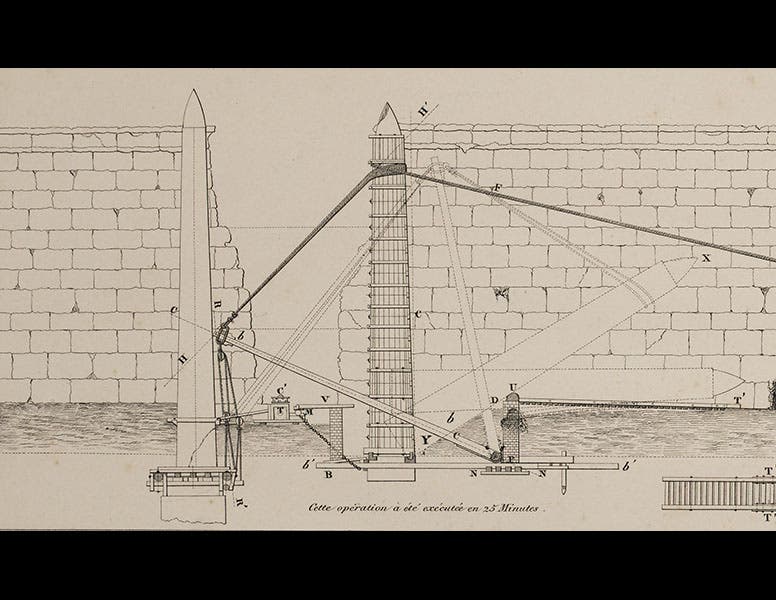
Linda Hall Library
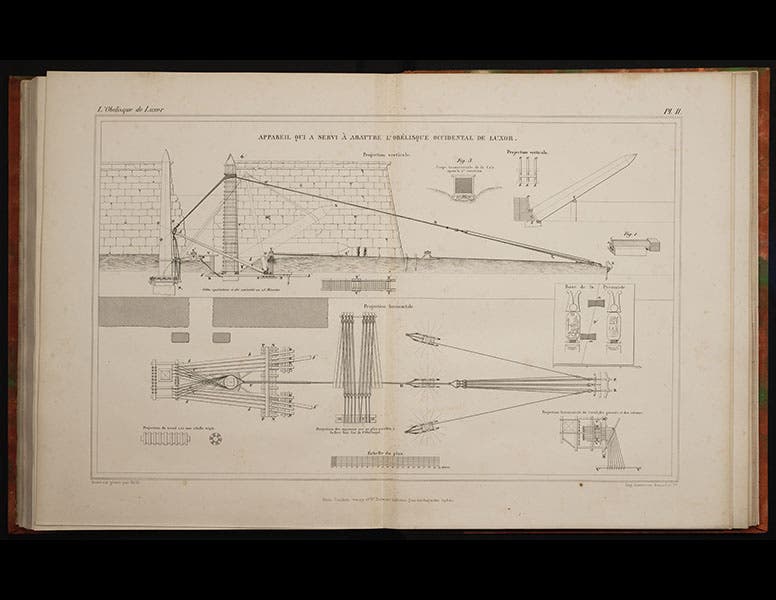
Linda Hall Library
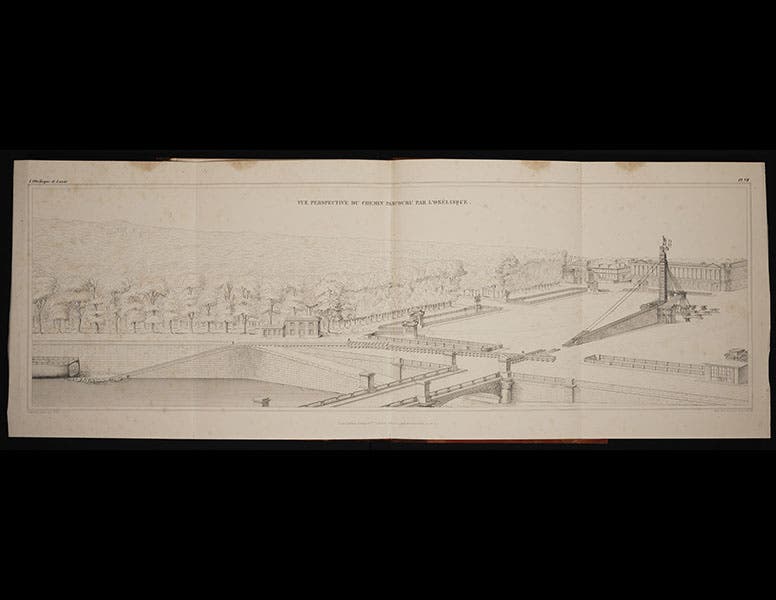
Linda Hall Library
Jean-Baptiste Apollinaire Lebas, a French engineer, was born Aug. 13, 1797. In 1819, the Vice-Consul of Egypt gave an obelisk standing in Alexandria to France (it was one of a pair, the other going to England), but the French wanted a grander monolith, so they lobbied for one of the large obelisks up the Nile, at the temple of Luxor in Thebes. Napoleon’s savants had recorded it during the invasion of Egypt, 1798-1801 (second image; the obelisk that was given to France is the one on the right.)
In 1830, action was finally taken to bring the obelisk to Paris, as the French navy built an odd vessel, the Louqsor, more of a barge than a ship, which was designed for one purpose only--to accommodate a 250-ton obelisk in her hold. The Louqsor was taken to Alexandria in 1831, and Lebas was put in charge of hauling it up the Nile, removing the obelisk from the temple at Luxor, and loading it aboard the Louqsor. The enterprise would take several years, primarily because delays from Egyptian officialdom set the loading back until after the annual flooding of the Nile, so they had to wait another whole year to float the barge.
The mechanism Lebas used to lower the obelisk was cleverly designed and worked well. A plate from his book shows the entire apparatus (third image), while a detail gives us a better view of the lowering mechanism (first image). The obelisk was then conveyed to the Nile and loaded aboard the Louqsor. There is a model at the National Marine Museum in Paris that shows the loading operation (fourth image).
The barge with its granite cargo proceeded down the Nile to Alexandria, where it met up with the Sphinx, France's first paddle-wheel steamer, which was put in charge of towing the unwieldy Louqsor back to France). It was the spring of 1833 when they set off across the Mediterranean, and they arrived without mishap in France in late summer, and were in Paris by December, but then the obelisk sat in the Louqsor for almost three more years while French authorities tried to figure out where to put it. Finally, they settled on the Place de la Concorde, where earlier the guillotine had disassembled many a French frame during the Reign of Terror. Since Lebas had done so well in Egypt, he was given the task of moving the obelisk from the Seine to the square and raising the obelisk to a vertical position (fifth image). The erection took place on Oct. 25, 1836, and despite a few scares, and regular serenades of gasps from the 20,000 onlookers who packed the square, the obelisk was successfully raised and then lowered onto its new pedestal. The operation was captured in a painting by François Dubois that is in the Musée Carnavalet in Paris (sixth image).
Lebas was widely celebrated for his achievement--he was the first man to move an obelisk since Domenico Fontana had trundled the Vatican obelisk across St. Peter's Square in 1586. In 1839, Lebas published his narrative of the lengthy enterprise, L’Obélisque de Luxor: Histoire de sa translation a Paris. We have this book in our History of Science Collection, and it is the source for three of the images above. The obelisk still stands in Paris, where the cyclists in the Tour de France race around it on the final day (seventh image). Sadly, the temple at Luxor has never been the same (eighth image).
Dr. William B. Ashworth, Jr., Consultant for the History of Science, Linda Hall Library and Associate Professor, Department of History, University of Missouri-Kansas City. Comments or corrections are welcome; please direct to ashworthw@umkc.edu.

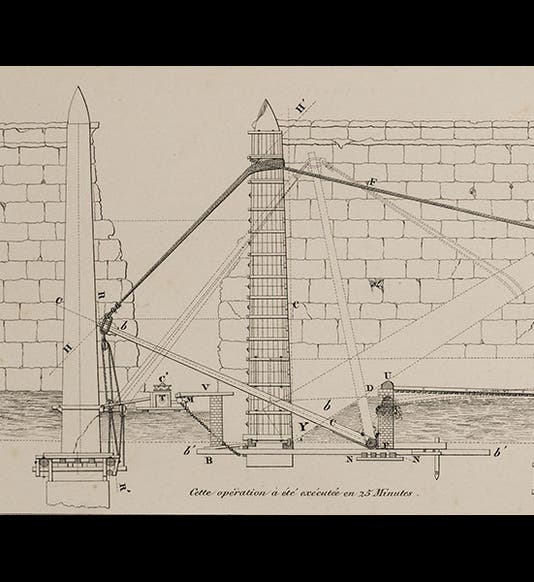

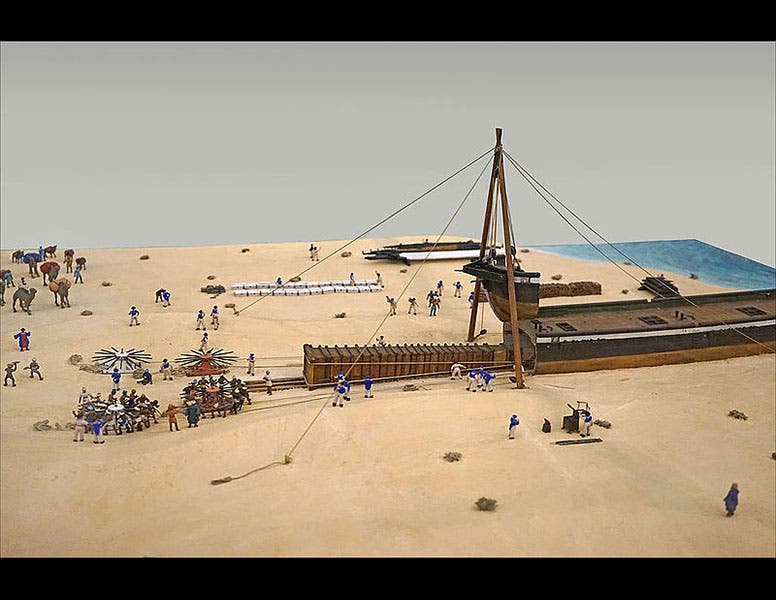
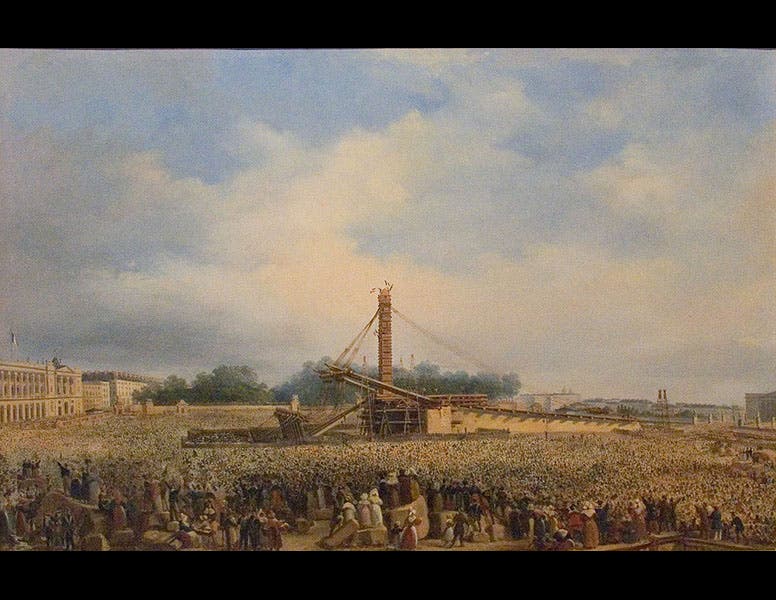

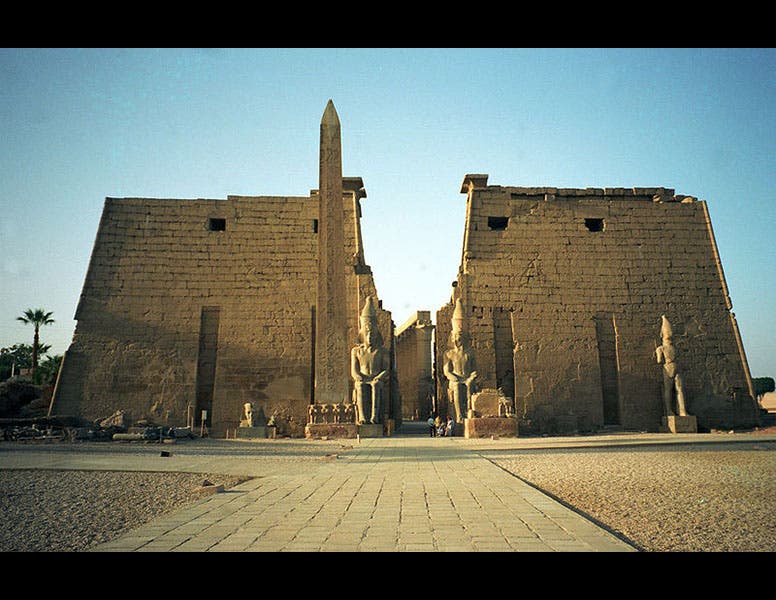


![Using an astrolabe to measure the depth of a well, woodcut in Elucidatio fabricae vsusq[ue] astrolabii, by Johannes Stöffler, 1513 (Linda Hall Library)](https://preview-assets-us-01.kc-usercontent.com:443/9dd25524-761a-000d-d79f-86a5086d4774/a998eb50-55d2-4a88-ace2-a50aa5fa86e7/Stoffler%201.jpg?w=210&h=210&auto=format&fit=crop)

